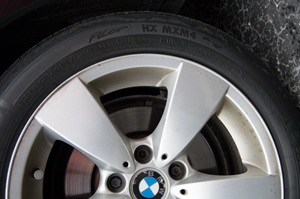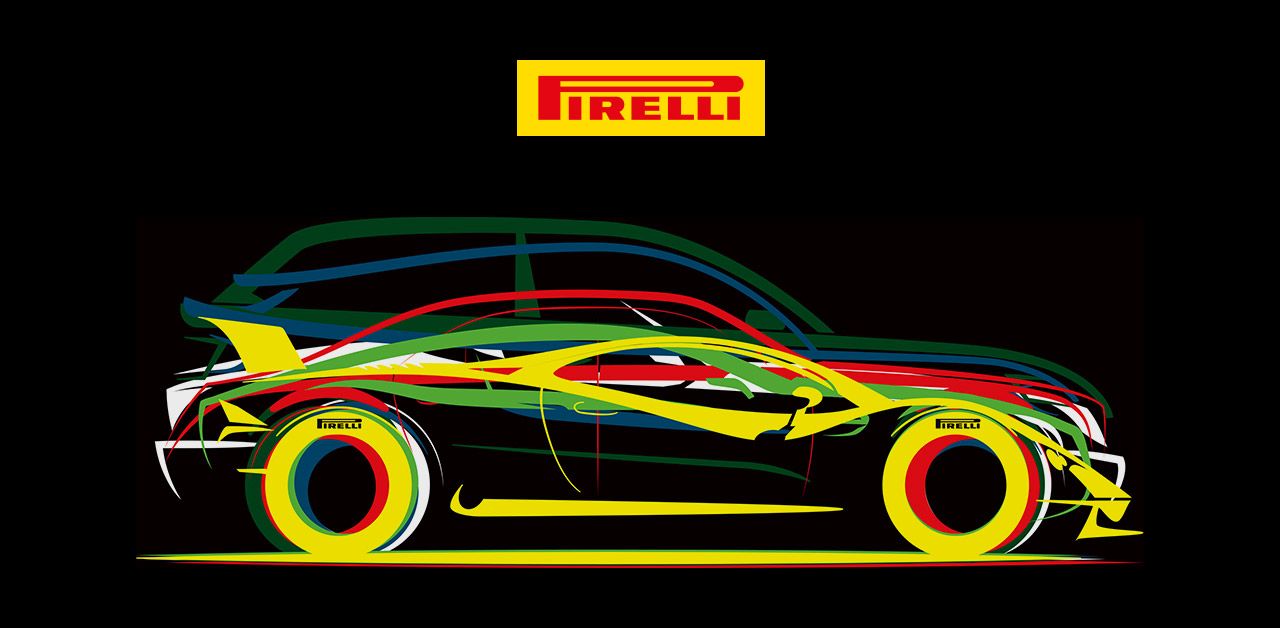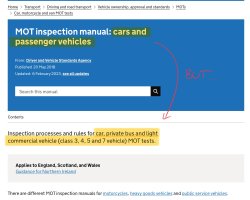Well yes and no: you were saying previously:I am not questioning whether your van should be class 4 or class 7.
The point is for a T32 Transporter it should have 103 minimum tyres.
”…you need a 103 tyre minimum, otherwise it should be MOT fail. You can not put a tyre on with a load rating below the axle weight whether it is class 4 or 7.”
And I‘ve pointed out that that isn’t the case. The MoT - as the legal implementation of underlying safety regs (The Road Vehicles (Construction and Use) Regulations 1986) - says that it only applies to Class 7. Which was my point right from the beginning. It isn’t black and white as you are suggesting.
Now further “should” my van have 103 minimum tyres?
Well possibly! But I don’t think it’s legally necessary (unless as per above you’re strictly a T32 panel van which I’m not).
I think legally it’s fine as long as my loading doesn’t exceed my tyres’ load rating. (So the police would need to check that on a weigh bridge.)
…but - and here I’m kinda going to agree with you in the end anyway but for slightly different subtle reasons - practically I think you should because:
a/ insurance (they will use marked load rating as a simple minimum - I suspect)
b/ police - even if one is in the right legally, it’s a lot easier just to meet an obvious tyre load rating compliance than argue all that!! And potentially waste time having to argue against points or in front of a magistrate!
c/ common sense and safety margins - by complying with it you adhere to a safety system
But I would note that I suspect insurance expects all sorts of things to be ‘standard’ and many many of have changed our wheels and tyres from the OEM spec - how many of are running eg bog standard 215/60/17s??? Some van door stickers seems to give lots of options. Mine only lists 215/60/R17 despite being a performance 204PS 4Mo!?
And note most originals (except perhaps Sportline spec or some options) are going to be commercial van-rated tyres.
So I’m not quite sure why people are quite so obsessed with load rating compliance when also freely customising all sorts of other things? ;-)
I mean in my case I’m also on lowered suspension and really wide low profile tyres (275/35/R20s)…
Yes, but it’s not just tyre pressures: it’s manufacturer’s recommended options (see also my point above about insurance expecting ’standard’), and which are all options that comply with the necessary load rating (necessary to meet axle weights). Note that all yours are indeed greater than 101.Just for reference, I believe the numbers on the door are to do with the tyres that VW supply new on the van and the correct pressures for those tyres.
I just looked at the sticker on my van and there are pressures quoted for tyres of various sizes and weight ratings from 102 to 109. My van is a T30 and working from the axle weight need 101 rated tyres.
View attachment 225942
So why my 102?
Maybe it‘s just stupidly ambiguous: this tyre perhaps happens to come in both 102 and 104 and it’s the up to you - if necessary (my argument above) - to use the 104 if (yet again, if) you need that load rating???
And because it gets weirder, having searched my original size there ARE 104/102 rated tyres!!
eg Kumho PorTran KC53. Only £ 81.62
WTF?
Last edited:



